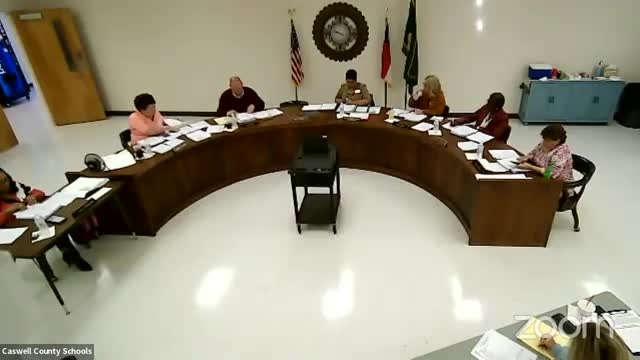School Board Faces Lunch Time Controversy Amid Student Complaints
November 12, 2024 | Caswell County Schools, School Districts, North Carolina
This article was created by AI summarizing key points discussed. AI makes mistakes, so for full details and context, please refer to the video of the full meeting. Please report any errors so we can fix them. Report an error »

In a recent school board meeting, members discussed the ongoing concerns regarding lunch periods at Dillard Middle School, particularly the adequacy of time allocated for students to eat. The School Health Advisory Council (SHAC) had previously recommended that students receive at least 20 minutes for lunch and 15 minutes for breakfast. However, board members expressed that many students were not receiving this time due to delays in serving and long lines, often resulting in only 10 to 11 minutes of actual eating time.
The conversation highlighted the need for a policy review, with some members advocating for an extension of lunch periods to 30 minutes to ensure students have sufficient time to consume their meals. However, others cautioned that extending lunch could interfere with instructional time, which is critical for meeting educational requirements.
Despite the complaints from parents and teachers about the current situation, some board members noted that Dillard Middle School has a scheduled 35-minute lunch period, suggesting that the issue may not be as widespread as perceived. They emphasized that students often choose to spend their time on phones or socializing rather than eating, which complicates the narrative around hunger and time constraints.
Ultimately, the board decided to maintain the existing policy, which stipulates that students should have 20 minutes to eat after receiving their meals. This decision was made with the understanding that while policy can dictate time allowances, the practical implementation relies heavily on school procedures and the discretion of principals. The board plans to monitor the situation and revisit the policy if necessary, ensuring that students' needs are adequately met while balancing educational requirements.
The conversation highlighted the need for a policy review, with some members advocating for an extension of lunch periods to 30 minutes to ensure students have sufficient time to consume their meals. However, others cautioned that extending lunch could interfere with instructional time, which is critical for meeting educational requirements.
Despite the complaints from parents and teachers about the current situation, some board members noted that Dillard Middle School has a scheduled 35-minute lunch period, suggesting that the issue may not be as widespread as perceived. They emphasized that students often choose to spend their time on phones or socializing rather than eating, which complicates the narrative around hunger and time constraints.
Ultimately, the board decided to maintain the existing policy, which stipulates that students should have 20 minutes to eat after receiving their meals. This decision was made with the understanding that while policy can dictate time allowances, the practical implementation relies heavily on school procedures and the discretion of principals. The board plans to monitor the situation and revisit the policy if necessary, ensuring that students' needs are adequately met while balancing educational requirements.
View full meeting
This article is based on a recent meeting—watch the full video and explore the complete transcript for deeper insights into the discussion.
View full meeting
